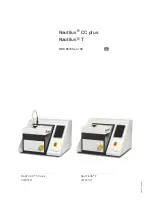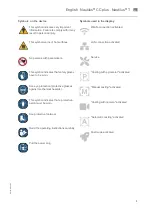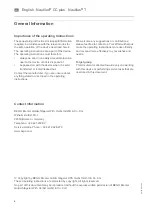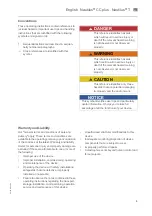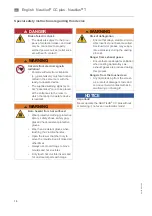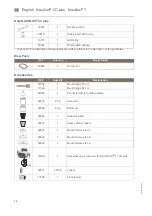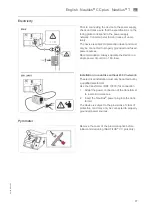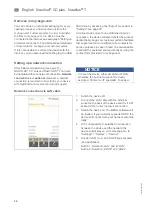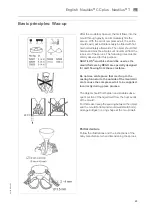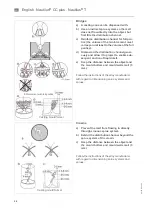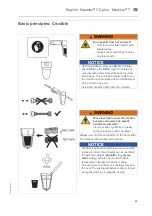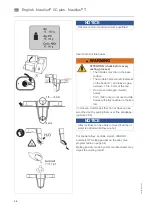
English
⋅
Nautilus
®
CC plus
⋅
Nautilus
®
T
11
A
en
Device description
NAUTILUS
®
CC plus and NAUTILUS
®
T -
compact table casting devices with integrated cooling and user-friendly touch-
screen
Both devices use the tried-and-tested HF vacuum
pressure casting process with a split crucible and
come with integrated cooling as well as user-friendly
touch-screens.
Special emphasis was placed on redundant safety
systems. A double closing sounds indicates that
both flaps are closed.
Both of the devices have an "eco-mode" to lower
energy consumption when they are not in use for a
while; eco-mode is automatically activated after 3
minutes and stops 10 minutes after the touch-
screen lighting has turned off. During this time, the
NAUTILUS
®
only uses 10 W. To end the energy
saving mode, simply tap on the touch-screen and
the device will be ready for operation within a few
seconds.
New software versions can be transmitted via one of
the two UBS interfaces on the back of the device.
NAUTILUS
®
CC plus and NAUTILUS
®
T casting
devices can thus be updated.
NAUTILUS
®
CC plus comes with a pyrometer,
which does not only measure the temperature of the
melt without direct contact but - in combination with
specially developed software - enables the casting
process to be automated to a large extent. This
allows for a reproducible quality of the casting
process, which can be documented and archived in
form of casting logs via the USB interfaces. In the
event of malfunctions, it is also possible to call up
diagnostic protocols and send them to the BEGO
Service.
NAUTILUS
®
T comes with an integrated camera to
monitor the casting process. A casting video is
available for subsequent inspection/examination.
Determining the casting temperature for dental alloys with the NAUTILUS
®
CC
plus
The flowability of the melt and thus the casting
temperature are of decisive importance for the
quality of the cast object. The problems that can
arise when melt is casted at a temperature that is
either too high or too low, are known in practice and
described in the relevant literature so it will not be
discussed in detail here
Dental alloys have the property of not having a fixed
melting point, but a melting interval. Within the
melting interval alloys occur in viscous as well as in
crystalline form.
The melting interval is easily identified by the
characteristic cusps in the melting and solidification
curve, which are the result of irregularities in the
temperature progression.
When an alloy is melted, the first cusp in the curve
is the so-called solidus, the second one is referred
to as liquidus; the liquidus specifies the point at
which the alloy is completely liquid. NAUTILUS
®
CC
plus uses this behavior in the temperature
progression by means of an analytical thermal
method.
To ensure optimal flowability of the melt in the dental
casting mould, the melt is heated beyond the
liquidus point. Depending on casting method and
alloy, a temperature increase between 100°C and
180°C has proven to be optimal in practice. Corre-
Summary of Contents for Nautilus CC plus
Page 7: ...English Nautilus CC plus Nautilus T 7 86105 BA en 00 en Unpacking Packing REF 17909 ...
Page 42: ...42 86105 BA en 00 English Nautilus CC plus Nautilus T en ...
Page 43: ...Nautilus CC plus en English ...
Page 59: ...Nautilus T en English ...
Page 83: ...English Nautilus CC plus Nautilus T 83 86105 BA en 00 en NAUTILUS T ...
Page 85: ......
Page 86: ......
Page 87: ......
Page 88: ......

